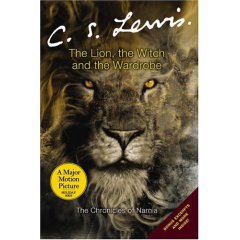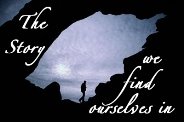The Night Before Narnia
Preview Guide
Welcome to the preview showing of The Lion, The Witch, and the Wardrobe. This brief guide will point you to some further resources to get the most out of the Chronicles of Narnia.
C.S. Lewis once wrote an essay entitled, Sometimes Fairy Stories May Say Best What’s to Be Said.
“I thought I saw how stories of this kind could steal past certain inhibitions which had paralyzed much of my own religion in childhood. Why did one find it so hard to feel as one was told one ought to feel about God or about the sufferings of Christ? I thought the chief reason was that one was told one ought to. An obligation to feel can freeze feelings And reverence itself did harm. The whole subject was associated with lowered voices, almost as if it were something medical.
But supposing that by casting all these things into an imaginary world, stripping them of their stained glass and Sunday school associations, one could make them for the first time appear in their real potency? Could one not thus steal past those watchful dragons? I thought one could.”
Here is an excerpt from a biographical article that gives a glimpse of C.S. Lewis’ journey to faith.
Lewis began teaching at Oxford in 1925, with a special emphasis on medieval literature. He was, at the time, an atheist. His mother had died of cancer when he was only nine, and trust in God's goodness was shattered. By the age of fourteen, Lewis had rejected faith in any kind of God, and horrific experience in World War I (in which he was wounded) only confirmed these convictions. Yet his immersion in European literature repeatedly confronted him with the fact that the writers he most admired were Christian. By 1929, Lewis felt compelled to adopt a cautious theism. In his 1955 autobiography, "Surprised by Joy" (there's that term again), Lewis described himself at this point as "the most dejected and reluctant convert in all of England."
J.R.R. Tolkien, author of the "Lord of the Rings" trilogy, was to take a decisive role in the next step of Lewis' conversion. On a fall evening in 1931, Lewis had dinner with fellow professors Tolkien and Hugo Dyson. They walked through the college's park, talking, until the early hours of the morning. The conversation turned to mythology. Lewis felt that myths, despite their imaginative appeal, were, in the end, merely lies. Tolkien proposed instead that the beauty of Christianity is that it is a myth that happens to be *true.* The universal hunger planted in human beings by God, evidenced by all the world's mythologies, was made manifest in time and space. In Jesus Christ, God really did walk this earth, die, and rise again.
These words must have rung an uneasy bell. Some years earlier a tutor in classical studies at Oxford, T. D. Weldon, had troubled Lewis by stating that, as ancient texts go, the Gospel documents bore strong evidence of authenticity. Although Weldon was a vehement atheist, he said, "It almost looks as if it had really happened once."
A few days after the late-night walk with Tolkien, still pondering the conversation, Lewis got into the sidecar of his brother’s motorcycle for a trip to the zoo. He later wrote, "When we set out I did not believe that Jesus is the Son of God, and when we reached the zoo I did." It was a distinctly intellectual conversion, a laser-like search for Truth, unaccompanied by emotional tumult. Yet it seems somehow characteristic of Lewis-never one to stand on dignity--that it took place in a sidecar on the way to the zoo.


